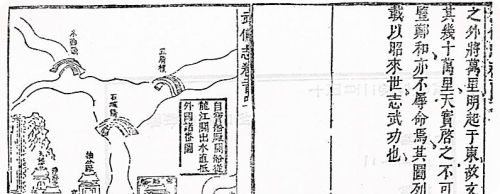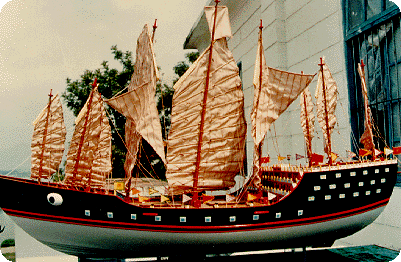
Xi Shi, who was a contemporary of Buddha, was one of the four beauties of ancient China. It seems she was so beautiful that when they looked her, the fish forgot to swim and sank and the birds forgot to flap their wings and fell to the ground. She was the concubine of King Fuchai of Wu who it seems was so smitten by her beauty that like King You of the Zhou, he forgot his dharma. King Fuchai’s kingdom was invaded and he was forced to commit suicide.
Examples of Bao Si and Xi Shi taught the Chinese that women can be dangerous and can bring down the city and the nation. Thus when the heavy handed Qin dynasty collapsed and the Han dynasty emerged in the 3rd century BCE, they made changes to differentiate themselves from the Qin. Since the Qin followed a centralized model of administration, the Han followed a decentralized model. The Han also switched from the legalistic model to a Confucian model and with that patriarchy was built into the system.
It was clear that women were trouble and had to be kept out of power. If a woman was educated, it was considered equivalent to arming the enemy. There were three obedience and four virtues a woman had to practice in the Confucian culture.
The three obediences dictate that a woman must obey her father before manage, her husband after marriage and her sons after her husband’s death.These rules originated in conventions concerning the appropriate length of a woman’s mourning period following the death of her father and husband, gradually becoming the normative code insuring women’s lifelong subordination to men.[Women in Chinese Martial Arts Films of the New Millennium: Narrative Analyses and Gender Politics]
The four virtues related to the behavior of women and was adopted by families across the nation and the subordination of women was institutionalized.
What about Greece, the land of democracy and culture? It is from Greece that we get the story of Pandora, the woman who bought all the evils to humanity, thus hammering a similar point that women are a problem and have to be controlled. According to Meno, “A woman’s virtue, if you wish to know about that, may also be easily described: her duty is to order her house, and keep what is indoors, and obey her husband.”
From Greece again comes the story of Tiresias which goes like this. Once Zeus and his wife Hera have an argument on who has more pleasure during sex – man or woman. Since they could not come to an agreement, they called Tiresias who was transformed as a woman for seven years (long story). Tiresias replied, “”Of ten parts a man enjoys one only.” Once again, a good reason to control women.
Pandora was followed by Eve in the Hebrew Bible and all these stories, from the East and West, justified patriarchy. As global historians, when we examine such stories we find that patriarchy was not restricted to just one culture, but it transcended space in the ancient world.
References:
- Lecture 18, 24of MMW 11 by Prof. Matthew Herbst at UCSD
- Chen, Ya-chen. Women in Chinese Martial Arts Films of the New Millennium: Narrative Analyses and Gender Politics. Lexington Books, 2012.




